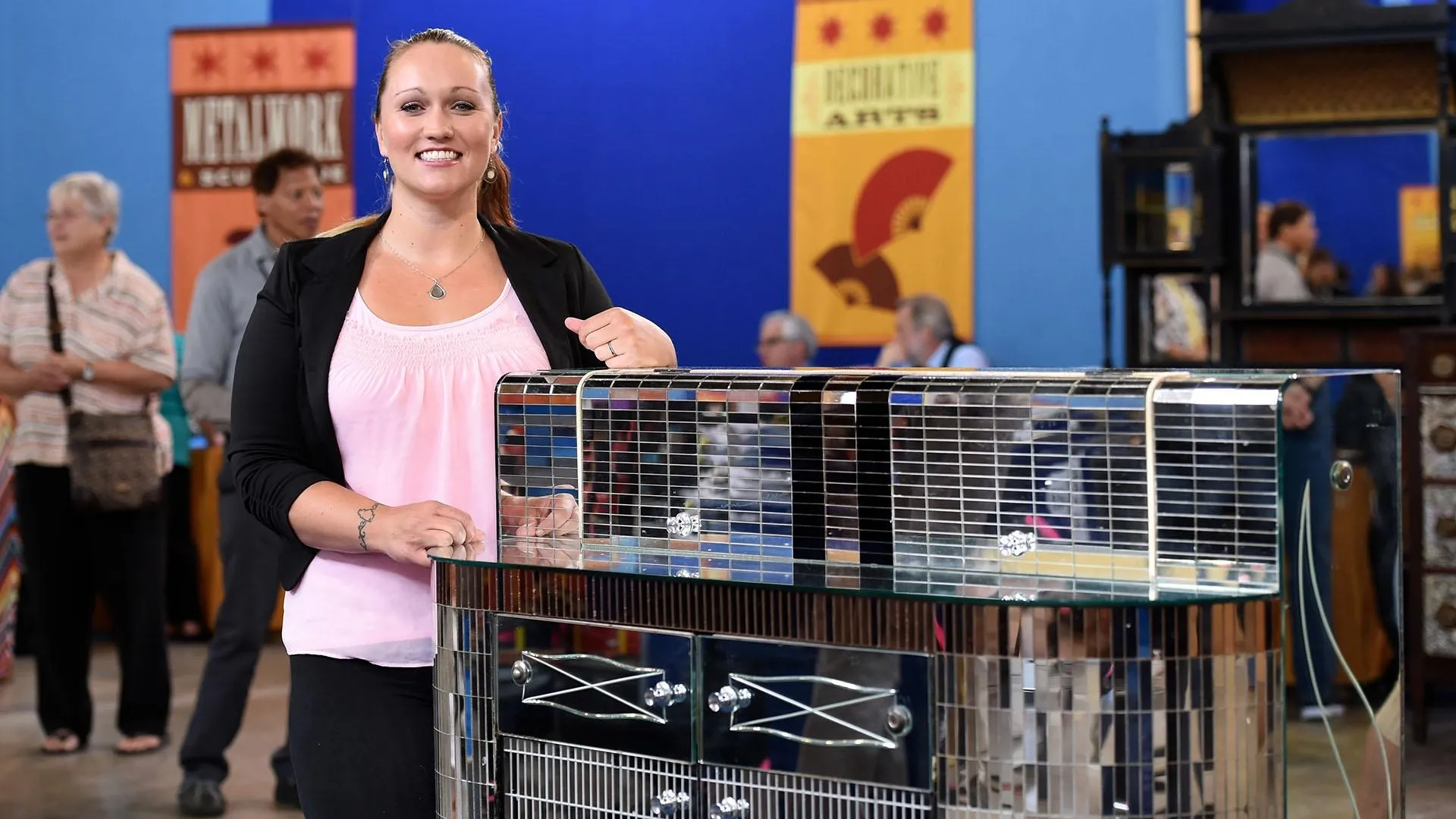HOST: It's always a good day to explore Chicago. This city is loaded with landmarks. And what better way to see them all than taking a trip on the historic elevated line, or the "El" as they call it here? There's the Field Museum, home of the largest T-Rex ever discovered. Millennium Park, sight of the reflective masterpiece Cloud Gate. Buckingham Fountain, Navy Pier, the Magnificent Mile. And after a busy day, there's no finer way to top it off than spending time at the opera. ROADSHOW visited Lyric Opera's Civic Opera House with appraiser Nicholas Lowry to gaze around this Art Deco marvel and discuss some 1920s transit posters. Nicho, first of all, I have to know that whenever I'm working with you, I will always be underdressed, but I appreciate that. But why are we looking at travel posters here at the opera?
APPRAISER: Well, it's a fair question, Mark. Samuel Insull, who was instrumental in having this theater built, also owned many of the local Chicago railway lines. And in order to sell seats on the lines of these trains that he had taken over, he started a fantastic poster campaign along the lines of many of the famous British and French advertising campaigns. And the team of Chicago artists that he assembled were among the best in America, and the posters that they have designed are extraordinary.
HOST: And you have selected one for us to look at now. Tell me about this poster.
APPRAISER: This piece, by one of the greater artists on that campaign, Oscar Rabe Hanson, with this sort of phenomenal beach scene, which even though the text is very Chicago specific, is something that can be enjoyed by anybody who's ever been to the seaside before. One of the beauties of this campaign was that Insull wasn't selling his trains; he was selling the places that his trains could take you, the places where you might want to take your family on a weekend, beautiful landmarks around Chicago. The University of Chicago is on one poster. The Field Museum. Here, the Civic Opera. Using the British model and the French model, he came up with the idea to make basically a branded advertising campaign whereby train riders would begin to recognize the typography, they'd begin to recognize the artistry, and sooner or later, the brands of these railways would grow in their mind. The campaigns ran through the 1920s. Sometimes, these pieces appear at auction. They're very scarce. When they do, some lesser examples can be bought in the $2,000 to $3,000 range. There's a spectacular one that's about three times the size, almost my height and my width, of Boul Mich-- Michigan Boulevard. It's a nighttime bird's-eye view over the city, absolutely fantastic, and I've heard that that sold privately for as much as $25,000. This piece, because of the combination of the artist, of the scene, of the availability of the scene to everybody in any part of the world, not just in Illinois, at auction, I'd estimate this piece between $8,000 and $12,000.
HOST: Well, it's a beautiful piece, and what a slice of Chicago history, and what a great place to learn about it. Thank you so much.
APPRAISER: You're welcome.



